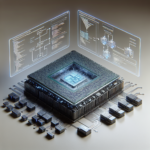Explaining the Concept of CPU Hypervisor Support

Explaining the Concept of CPU Hypervisor Support
In the realm of modern computing, virtualization has become a cornerstone technology, enabling the efficient use of hardware resources and the creation of flexible, scalable IT environments. At the heart of virtualization lies the hypervisor, a critical component that allows multiple operating systems to run concurrently on a single physical machine. This article delves into the concept of CPU hypervisor support, exploring its significance, functionality, and impact on computing.
Understanding Virtualization
What is Virtualization?
Virtualization is the process of creating a virtual version of something, such as hardware platforms, storage devices, or network resources. In computing, it typically refers to the creation of virtual machines (VMs) that can run different operating systems and applications on a single physical machine. This is achieved through the use of a hypervisor, which abstracts the underlying hardware and allocates resources to each VM.
Types of Virtualization
There are several types of virtualization, including:
- Server Virtualization: Dividing a physical server into multiple virtual servers, each running its own operating system and applications.
- Desktop Virtualization: Running multiple desktop environments on a single physical machine, often used in enterprise environments for centralized management.
- Network Virtualization: Creating virtual networks that operate independently of the physical network infrastructure.
- Storage Virtualization: Pooling physical storage resources into a single virtual storage device that can be managed centrally.
The Role of the Hypervisor
What is a Hypervisor?
A hypervisor, also known as a virtual machine monitor (VMM), is software that creates and manages virtual machines. It sits between the hardware and the operating systems, abstracting the physical resources and allocating them to the VMs. There are two main types of hypervisors:
- Type 1 (Bare-Metal) Hypervisors: These run directly on the physical hardware, providing high performance and efficiency. Examples include VMware ESXi, Microsoft Hyper-V, and Xen.
- Type 2 (Hosted) Hypervisors: These run on top of a host operating system, making them easier to install and use but generally less efficient than Type 1 hypervisors. Examples include VMware Workstation and Oracle VirtualBox.
Functions of a Hypervisor
The primary functions of a hypervisor include:
- Resource Allocation: Distributing CPU, memory, storage, and network resources among the VMs.
- Isolation: Ensuring that each VM operates independently and securely, without interference from other VMs.
- Management: Providing tools for creating, configuring, and monitoring VMs.
- Migration: Enabling the movement of VMs between physical hosts without downtime, known as live migration.
CPU Hypervisor Support
What is CPU Hypervisor Support?
CPU hypervisor support refers to the hardware features built into modern processors that enhance the performance and security of virtualization. These features are designed to offload some of the hypervisor’s tasks to the CPU, reducing overhead and improving efficiency. Two major CPU manufacturers, Intel and AMD, have developed their own sets of virtualization extensions:
- Intel VT-x (Virtualization Technology): A set of hardware-assisted virtualization features found in Intel processors.
- AMD-V (AMD Virtualization): A similar set of features found in AMD processors.
Key Features of CPU Hypervisor Support
CPU hypervisor support includes several key features that enhance virtualization:
- Hardware-Assisted Virtualization: This feature allows the CPU to handle certain virtualization tasks directly, reducing the need for complex software emulation. It improves performance by minimizing the overhead associated with context switching between VMs and the hypervisor.
- Extended Page Tables (EPT) / Rapid Virtualization Indexing (RVI): These technologies improve memory management by allowing the CPU to maintain separate page tables for each VM. This reduces the overhead of translating virtual addresses to physical addresses, resulting in faster memory access.
- Nested Virtualization: This feature allows a VM to act as a hypervisor and create its own VMs. It is useful for testing and development environments where multiple layers of virtualization are needed.
- Security Enhancements: CPU hypervisor support includes features like Intel VT-d (Virtualization Technology for Directed I/O) and AMD-Vi (I/O Virtualization) that improve the security and isolation of VMs by providing hardware-based control over I/O devices.
Benefits of CPU Hypervisor Support
The inclusion of hypervisor support in CPUs offers several benefits:
- Improved Performance: By offloading certain tasks to the CPU, hypervisor support reduces the overhead associated with virtualization, resulting in better performance for VMs.
- Enhanced Security: Hardware-based security features provide stronger isolation between VMs, reducing the risk of attacks and data breaches.
- Greater Scalability: With more efficient resource management, systems can support a larger number of VMs, making it easier to scale IT environments.
- Reduced Complexity: Hardware-assisted virtualization simplifies the implementation and management of virtual environments, making it easier for administrators to deploy and maintain VMs.
Implementing CPU Hypervisor Support
Enabling Virtualization in BIOS/UEFI
To take advantage of CPU hypervisor support, virtualization features must be enabled in the system’s BIOS or UEFI firmware. This typically involves accessing the firmware settings during the boot process and enabling options like “Intel VT-x” or “AMD-V.” The exact steps may vary depending on the motherboard and firmware version.
Choosing the Right Hypervisor
When selecting a hypervisor, it’s important to consider factors such as performance, compatibility, and ease of use. Type 1 hypervisors are generally preferred for production environments due to their efficiency and robustness, while Type 2 hypervisors are suitable for development and testing purposes.
Configuring Virtual Machines
Once the hypervisor is installed, administrators can create and configure VMs according to their needs. This involves specifying the amount of CPU, memory, storage, and network resources allocated to each VM. It’s important to balance resource allocation to ensure optimal performance and avoid overloading the host system.
Challenges and Considerations
Performance Overhead
While CPU hypervisor support significantly reduces the overhead associated with virtualization, there is still some performance impact compared to running applications directly on physical hardware. Administrators must carefully monitor resource usage and optimize configurations to minimize this overhead.
Security Risks
Despite the enhanced security features provided by CPU hypervisor support, virtualization introduces additional attack surfaces that must be protected. Administrators should implement best practices for securing virtual environments, such as regular patching, network segmentation, and access controls.
Compatibility Issues
Not all software and hardware are fully compatible with virtualization. Some applications may experience performance issues or require specific configurations to run smoothly in a virtual environment. It’s important to test and validate compatibility before deploying critical workloads on VMs.
FAQ
What is the difference between Type 1 and Type 2 hypervisors?
Type 1 hypervisors, also known as bare-metal hypervisors, run directly on the physical hardware and provide high performance and efficiency. Type 2 hypervisors, also known as hosted hypervisors, run on top of a host operating system and are generally easier to install and use but less efficient than Type 1 hypervisors.
How do I enable CPU hypervisor support on my system?
To enable CPU hypervisor support, you need to access your system’s BIOS or UEFI firmware during the boot process and enable options like “Intel VT-x” or “AMD-V.” The exact steps may vary depending on your motherboard and firmware version.
What are the benefits of hardware-assisted virtualization?
Hardware-assisted virtualization improves performance by offloading certain tasks to the CPU, enhances security through hardware-based isolation, increases scalability by supporting more VMs, and reduces complexity by simplifying the implementation and management of virtual environments.
Can I run nested virtualization on my system?
Nested virtualization allows a VM to act as a hypervisor and create its own VMs. This feature is supported by modern CPUs with hypervisor support, such as Intel VT-x and AMD-V. However, it may require specific configurations and software support to function properly.
What are the security risks associated with virtualization?
Virtualization introduces additional attack surfaces that must be protected. Security risks include vulnerabilities in the hypervisor, VM escape attacks, and misconfigurations. Administrators should implement best practices for securing virtual environments, such as regular patching, network segmentation, and access controls.
Conclusion
CPU hypervisor support is a critical component of modern virtualization technology, providing the performance, security, and scalability needed to create efficient and flexible IT environments. By leveraging hardware-assisted virtualization features, organizations can optimize resource usage, enhance security, and simplify the management of virtual machines. As virtualization continues to evolve, CPU hypervisor support will remain a key enabler of innovation and efficiency in the world of computing.




